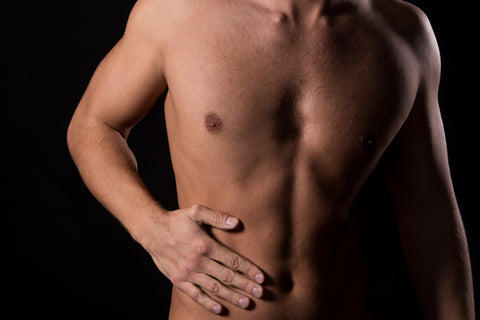Does Liver Disease affect Nails?


You may think there is no logical reason for nails to elicit liver disease in the body, but the thing about the human body is that it is all connected. All processes occurring in the body at a time are interrelated with all organs and systems.
Nail changes, despite other clinical interventions, are an effective diagnostic tool to identify many system diseases. However, liver diseases are more significantly visible than other disorders. Such diseases include:
Cirrhosis
Hepatitis
Nephritic syndrome
Diabetes mellitus
Jaundice
Alcoholic fatty liver disease
Hepatobiliary stenosis
Even hepatocellular carcinoma also referred to as ‘liver cancer’.
According to an experimental study, 60% of all liver-based medical conditions stem from the overconsumption of alcohol. The recommended limit is 14 units of alcohol per week. 90% of all liver diseases can be prevented by following a healthy diet and lifestyle changes.

Hepatobiliary diseases are associated with various cutaneous changes that are directly and indirectly associated with these diseases. Examination of nails has been considered helpful for clinical reasoning in clinical settings.
Despite modern technological advances, physical examination by a care provider remains the cornerstone of medical diagnosis and management. Nail colour changes, which occur gradually, can take place in nail plates or nail beds. Conditions at nail plates and nail bed levels, may not change quickly in response to acute diseases; this response is called “static physical findings.” Recognizing these nail changes may help to initiate early treatment as well as identify these systemic diseases and reduce serious complications, sequelae, morbidity, and mortality of chronic liver diseases.
Acute liver failure can develop quickly in an otherwise healthy person and is life-threatening. If you or someone you know suddenly develops yellowing of the eyes or skin; tenderness in the upper abdomen; or any unusual changes in mental state, personality, or behaviour, seek medical attention immediately as any of these could be a sign of it.
Chronic changes are the ones that are always complicated and always difficult to manage. These can take months to a year when the liver goes into irreversible distress. Symptoms include fluid build-up in the belly (ascites), vomiting blood, often from bleeding in the blood vessels in the food pipe (oesophagus), gallstones, itching, kidney failure, muscle loss, and loss of appetite.
Dermatologic manifestations are one of the most common extra-hepatic manifestations and often provide the first clues of the underlying liver disease. Manifestation of the liver and skin disorders are interrelated in various ways. Nails may be the only initial signal of liver disease.
Different mechanisms underlie the changes. Most commonly, they are known to occur because of changes in nail-bed vascularity and overgrowth of connective tissue. Unconjugated protein deposition, protein misfolding, impairment of blood supply, and inefficient target cell proliferation are other mechanisms by which nail changes are clinically apparent in patients with liver disease and other systemic disorders.
A few examples of how nail changes can be identified based on variations in liver disorders are provided here:
Terry's nails occurs most commonly seen in cirrhosis where nail beds appear white with a pink to brown transverse band. The underlying mechanism can be decreased vascularity and increased connective tissue deposition in the nail bed.
Upon gross examination, white transverse bands are seen on nail beds and also point toward liver cirrhosis. Underlying mechanisms can be hypoalbuminemia, oedema of the nail bed, and abnormal vasculature of the nail bed.
A white hue in the nail bed is seen in patients who are chronic alcoholics. This condition is most common in the US and is associated with alcoholic fatty liver disease. The underlying mechanism can be abnormalities in nail bed vascularization.
Patients present with red/blue discolouration of nails. Conditions in which this is apparent are cirrhosis and Wilson’s disease. The underlying mechanism is not known.
When nails have an increased curvature, they present with a particular Lovibond’s angle. Present only in patients with hepatopulmonary syndrome and chronic liver failure. Underlying mechanisms include elevated blood levels of platelet-derived growth factor and vascular endothelial growth factor.
With the vast variety of different symptoms that nail abnormalities show, it highlights the importance of inspecting the nails for early warning signs of systemic disease. While not all of these types of nail changes are guaranteed to be because of liver disease, they are all something you should have checked. The nail bed is very telling of your current health, you should see a doctor if you happen to have one of these as they will be able to tell you if you have an underlying condition.
Cirrhosis is the 11th most common cause of death globally. A Liver Blood Test helps to diagnose and monitor liver diseases. The finger-prick blood test can help identify whether there is damage to the liver, how well the liver is functioning, and the cause of any liver problems.
Bilirubin
ALP
ALT
GGT
Total Protein
Albumin
Globulin
For better health outcomes and monitoring progress, make sure to get a blood test for your liver to access your situation.
Nail changes are also seen in conditions that are not directly related to damage to the liver. Such cutaneous and mucocutaneous changes can be a result of congestive heart failure, kidney failure, TORCH infections and other metabolic disorders of the gastrointestinal tract, metastatic cancers, and paraneoplastic syndromes.

The body is a tightly functioning machine that requires all of its parts to function for it to work completely fine. If one part of the body starts to weaken, it will have a knock-on effect on the rest of the body. Something as little as a change in the colour of your fingernails could be showing something massive going on somewhere else in your body. This is the reason why you should regularly check your body's well-being. If you have any worries, always talk to your doctor or test your liver yourself.










Plus get the inside scoop on our latest content and updates in our monthly newsletter.